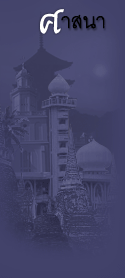 ความคิดเห็นที่ 9
ความคิดเห็นที่ 9

ตอบไปหลายปีแหละ
กลับมาตอบใหม่เรื่องเดิมๆๆ
คนแต่งชื่อ Notovitch
คนรัสเซีย ไปเที่ยวธิเบต อินเดีย
เค้าเรียก พระเยซูว่า Issa ด้วย
อ่านเองและกัน
ใหนๆๆๆ ก็แปลไทยได้แหละ
Reactions to Notovitch
This alleged manuscript generated a number of lively responses. Let us briefly look at a sampling of these.
F. Max Muller. In October 1894, preeminent Orientalist Max Muller of Oxford University (who himself was an advocate of Eastern philosophy and therefore could not be accused of having a Christian bias) published a refutation of Notovitch in The Nineteenth Century, a scholarly review. Four of his arguments are noteworthy: (1) Muller asserted that an old document like the one Notovitch allegedly found would have been included in the Kandjur and Tandjur (catalogues in which all Tibetan literature is supposed to be listed). (2) He rejected Notovitch's account of the origin of the book. He asked how Jewish merchants happened, among the millions of India, to meet the very people who had known Issa as a student, and still more "how those who had known Issa as a simple student in India saw at once that he was the same person who had been put to death under Pontius Pilate."[8] (3) Muller cites a woman who had visited the monastery of Himis and made inquiries about Notovitch. According to a letter she wrote (dated June 29, 1894), "there is not a single word of truth in the whole story! There has been no Russian here. There is no life of Christ there at all!"[9] And (4) Muller questioned the great liberty Notovitch took in editing and arranging the alleged verses. Muller said this is something no reputable scholar would have done.
Notovitch promptly responded to Muller's arguments in the preface to the London edition of The Life of Saint Issa which was published the following year (1895). But his response did little to satisfy his critics. He said: (1) The verses which were found would not be in any catalogues because "they are to be found scattered through more than one book without any title."[10] (But in his first preface he said the Convent of Himis contained "a few copies of the manuscript in question."[11]) (2) Regarding the unlikeliness of Jewish merchants encountering those who knew Issa as a child in India, Notovitch said "they were not Jewish but Indian merchants who happened to witness the crucifixion prior to returning home from Palestine."[12] (Even so, it would still be unlikely that - among the millions in India - the merchants would come upon the precise people who knew Issa as a child.) (3) As for editing and arranging the verses in The Life of Saint Issa, Notovitch said that the same kind of editing was done with the Iliad and no one ever questioned that. (But how does this legitimize Notovitch's modus operandi?) (4) As to the refusal by the lama of Himis to affirmatively answer questions about the manuscript (as he apparently did with the lady who wrote Muller), Notovitch says this was because "Orientals are in the habit of looking upon Europeans as robbers who introduce themselves in their midst to despoil them in the name of civilization."[13] Notovitch succeeded only "because I made use of the Eastern diplomacy which I had learnt in my travels." 14 (This was a convenient rationalization, for Notovitch could always point to a lack of "Eastern diplomacy" on the part of a European challenger whenever a monk refused to corroborate the Issa legend.)
Assuming (wrongly) that his response to Muller laid criticism of his work to rest, Notovitch suggested that in the future his critics restrict themselves solely to the question: "Did those passages exist in the monastery of Himis, and have I faithfully reproduced their substance?"[15]
J. Archibald Douglas. J. Archibald Douglas, Professor at Government College in Agra, India, took a three-month vacation from the college and retraced Notovitch's steps at the Himis monastery. He published an account of his journey in The Nineteenth Century (June 1895), the bulk of which reproduced an interview with the chief lama of the monastery. The lama said he had been chief lama for 15 years, which means he would have been the chief lama during Notovitch's alleged visit. The lama asserted that during these 15 years, no European with a broken leg had ever sought refuge at the monastery.
When asked if he was aware of any book in any Buddhist monastery in Tibet pertaining to the life of Issa, he said: "I have never heard of [a manuscript] which mentions the name of Issa, and it is my firm and honest belief that none such exists. I have inquired of our principal Lamas in other monasteries of Tibet, and they are not acquainted with any books or manuscripts which mention the name of Issa."[16] When portions of Notovitch's book were read to the lama, he responded, "Lies, lies, lies, nothing but lies!"[17]
The interview was written down and witnessed by the lama, Douglas, and the interpreter, and on June 3, 1895, was stamped with the official seal of the lama. The credibility of The Life of Saint Issa was unquestionably damaged by Douglas's investigation.
http://www.inplainsite.org/html/the_lost_years_of_jesus.html
มีความเห็นของเพื่อนออร์ธอดอกซ์ด้วย
อีกหัวข้อ หน้าสน Was Jesus a Buddhist?
เพื่อนแองกลีกัน เค้าถามตอบกะเพื่อนพุทธ
http://www.thezensite.com/non_Zen/Was_Jesus_Buddhist.html
เค้าเถียงกันและสรุปกันไปแล้วเป็นภาษาปะกิต
จากคุณ :
สาวสวนพลู  - [
28 ก.พ. 50 19:50:08
]
- [
28 ก.พ. 50 19:50:08
]
|
|
|

